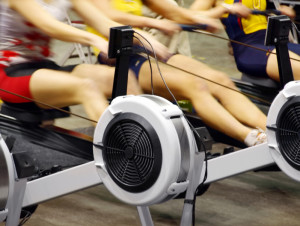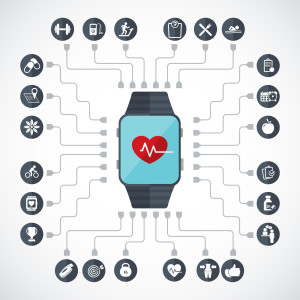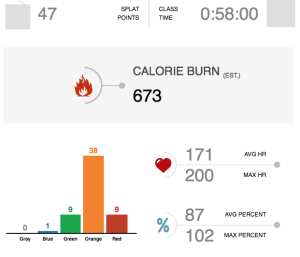Fitness trends come and go and over the past 20+ years I have been a part of and experienced most of them. The past few years there has been a movement of promoting the “science” of training, backed by research and University studies. Drop the Science of something in a blog, conversation or more importantly a sales pitch and you win instant credibility (to the naive). Science and research can be extremely beneficial when applied correctly in the fitness / strength and conditioning field and there is large amounts of it available. Having said all of this there is a lot of skill in learning how to apply the “science” and understanding when good judgement and experience trump what research says about a specific concept.

Recently, I shopped another gym to see what type of programs they offered. They drop the #science word a lot so I figured it was worth looking into. As a gym owner, staying connected to the industry is crucial if I want to stay on top of my game giving my clients the best overall experience. The gym I chose to visit promotes HIIT (High Intensity Interval Training ) and EPOC (Excess Post-exercise Consumption) as the science buzz words of choice. In theory high intensity bouts of conditioning will have increased metabolism (calorie burning) for hours after training and improved hormone profiles by keeping testosterone levels higher after training,
Increased metabolism and improved hormone profiles should then lead over time to improve body composition (more muscle created, more fat being burned). As another benefit, this high intensity training environment also allows people to train for a shorter duration of time and see longer term benefits. There is a lot of research backing this theory. What is also known, is that in keeping exercise intensity elevated for excessive amounts of time and doing so numerous times per week can also lead to poor adherence to exercise program due to fatigue, increased injury risk, and higher cortisol levels over time which can interfere with weight loss and be detrimental to health. So the lesson here is get enough intensity, but not too much. The cool thing about the training effect of EPOC, is that you can measure it by monitoring Heart Rate which can take a lot of the guessing out of your training. In real terms, pushing north of 85% of your max heart rate is enough to stimulate EPOC, and remember you don’t need to push those levels for extended periods of time. Really 15-20 minutes total at this level is tops, and most importantly not all at once. If you think about it in terms of a car, 90% + is your redline on the RPM meter. If you are up that high for too long you need to switch gears or your engine and transmission will not last as long. Pushing at 85% is fine for short bouts of training, but staying there too long will cause wear/tear and over fatigue on many people, especially beginners. The goal of HIIT training is to get into the ranges of 85% + and then get out. So the intervals should be 75-80% as a baseline steady pace then shooting into that 85%+ or sometimes 90%+ range for 30seconds to a few minutes, then bringing it back down to the lower ranges. In term of a 60 minute workout, spending about 30-40% of your time in these ranges would be considered effective (18-24minutes). The term stimulate don’t annihilate would fit perfectly here.

Now back to my story. This gym I shopped actually gives you a heart rage monitor to train with and projects your HR on a large TV screen for you and your instructor to see so that you can quantify how hard you are working. You can then know the appropriate time to back off when it is necessary to push a little harder if you are slacking. It is a great concept and something I we implement at my facility. The Young lady who greeted us at the gym explained these concepts as she handed me the heart rate monitor so that we could manage our fatigue to prevent injury and burnout. Once class started the instructor also gave us a break down on the #science. I was actually looking forward to the training. The workout was broken down into a conditioning circuit with rowers, treadmills, weights and followed by a strength circuit with more weights. The instructor noticed that I was a 200lb powerlifter and handed me two 70lb kettlebells. The first part of the workout was a combination of rowing machine, heavy goblet squats, more rowing, heavy presses, rowing and more high rep weighted squats for about 20 minutes, this was followed by the strength portion of more pressing, more weighted squats, and some body weight movements. I was told that you never do the same workout twice (that can be an entirely different article). As the workout began my HR was staying steady in the 85% range and shot up occasionally in 90% range, and I was pretty fascinated seeing my stats in real time on the TV monitors around the facility. Knowing what I know I chose to slow it down a bit because rowing a 500m sprint the pressing 140lbs for 12 reps with an elevated heart rate isn’t the safest thing for my shoulders and neck. I really didn’t need the HR monitor to tell me slow down, but at least I could quantify the “feels”.

The thing that boggled my mind was every time I slowed down to get my heart rate out of the “Orange” or “Red” zone (HR on the screens are color coded) so I could push the heavier weight, the instructor told me to keep going and not stop. I listened to my body and took a few extra seconds, but having the “coach” yell at you to keep it moving does push you a little harder. This happened not only throughout the conditioning portion, but also through the so called “strength” portion of the workout. It was an intense workout, and I enjoyed some of it. At the end of the session we were then shown a graph of our training, and that 15-25 minutes max time I was supposed to spend in the higher heart rate zones was actually closer to 40 minutes. I had burned 950 calories which was cool since I wanted to eat a big breakfast afterwards, but I was baffled. The instructor saw my HR the entire time and chose to push me regardless of what the HR monitor was telling us after he had already explained the #science. I wasn’t the only person with these results. My friend in the class was in the 92%+ range for nearly 9 minutes! The philosophy that was just preached to me before class was completely disregarded. It’s like a strength coach telling you how to never push to failure and keep good form only to push you into 3 extra reps on bench press giving you a deadlift spot screaming, “It’s all you bro!!” Even more ironically, each person in class receives points for the workout and guess what… you receive more points the longer you stay in the red and orange zones of your heart rate. So the science says spend only 15-25 minutes in these zones for the maximal benefit and reducing risk of injury as well as to improve long term adherence of an exercise program, but you receive a reward for disregarding it to push harder and longer. Here is the post workout email she received highlighting her heart data and guess what she had the most points for the class as well!

I’m sure this experience isn’t unique to this gym. A lot of the fitness industry has become kind of laughable to me, but unfortunately there is a seemingly endless crowd of individuals that are uneducated in this field and will be wowed by talk that isn’t backed in practice. This experience is a perfect example of putting science into the wrong hands. Our instructor was motivational and did a good job of managing a room, but did a big disservice to what could have been real experience in how science and training can coincide for great experience that makes sense. As I have said for years, anyone with no experience can put a workout together to create a beat down to make you sweat and really sore, but it takes practice and expertise to put together a thoughtful program that gets long term results. Just because someones hands you some fancy technology and makes you feel exhausted after a workout doesn’t meant they know what they are doing.
